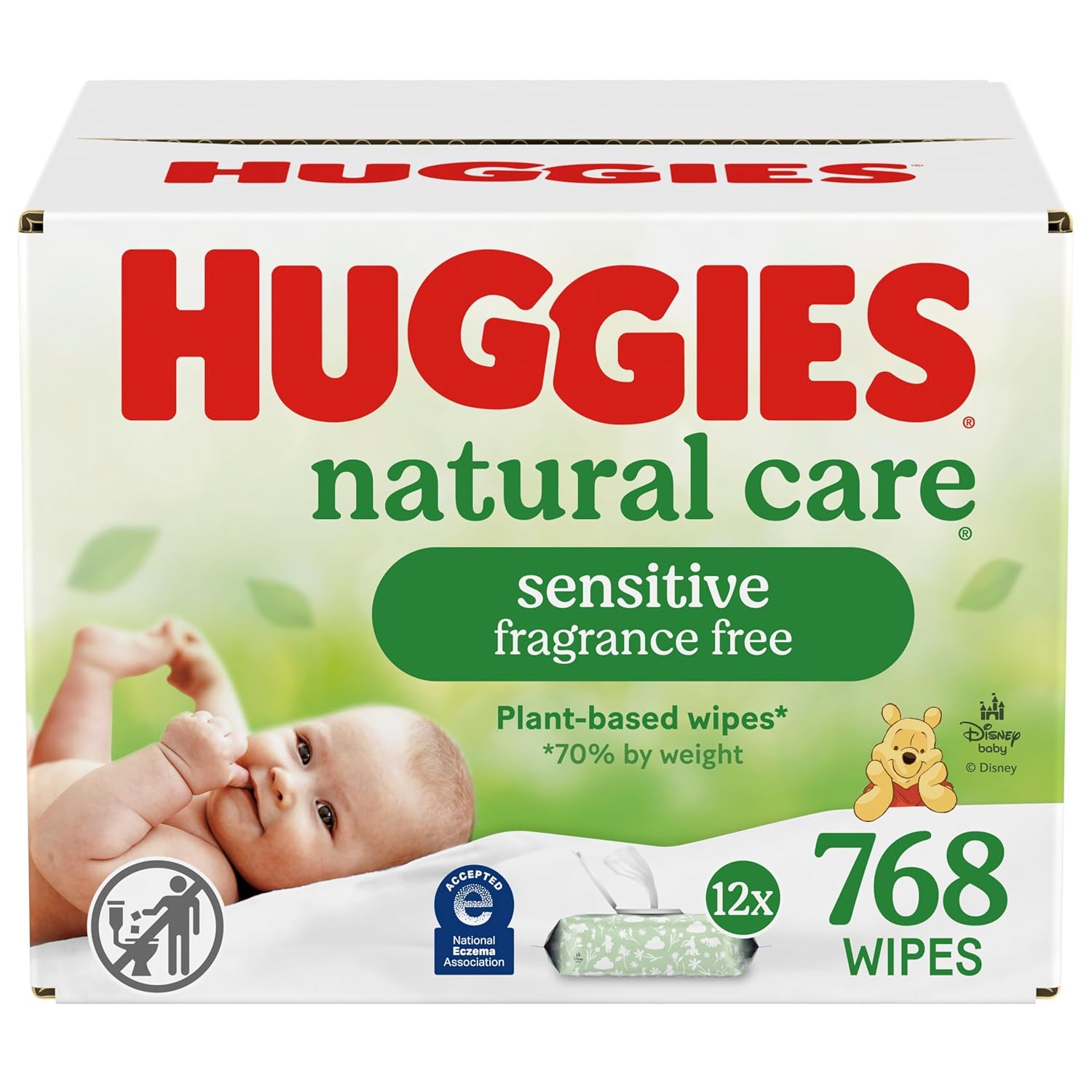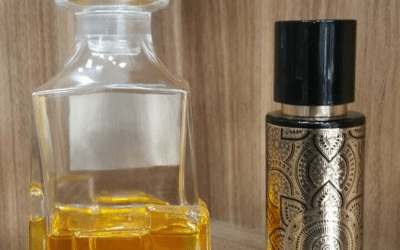
Quick overview — what this guide gives you
Parents in 2025 face more product choice — and more safety conversations — than ever. This guide lists the Top 10 baby-food brands and services in the USA for 2025. It explains why each made the list. Additionally, it compares formats like pouches, jars, and fresh/subscription. The guide also summarizes safety developments, including regulatory moves on heavy metals. Lastly, it gives practical, actionable feeding and shopping advice you can use today.
Key sources used include brand pages and recent regulatory updates. This includes FDA guidance on lead/action levels. Additionally, brand transparency pages and recall notices were used. For a regulatory background on reducing toxic elements in baby foods, see the FAD’s guidance on lead action levels. It also includes 2025 updates. (U.S. Food and Drug Administration)
Snapshot — the Top 10 (short list)
- Once Upon a Farm (best cold-pressed/refrigerated pouches) (Once Upon a Farm)
- Little Spoon (best overall subscription & stage-based program) (littlespoon.com)
- Yum (best dietitian-backed, nutrition-forward fresh purees) (YUMI)
- Gerber (most widely available legacy brand — broadest range) (Nestlé USA)
- Plum Organics (best organic retail pouches; creative flavors) (Plum Organics)
- Beech-Nut (best jarred classics with expanded testing transparency). (Beech-Nut)
- Earth’s Best Organic (best budget organic retail option). (Earth’s Best)
- Sprout Organic Foods (best simple ingredient blends and single-ingredient pouches)
- Happy Family / Happy Baby (best transition path to toddler snacks)
- Nurture Life (best prepared family/kid meals that support toddler nutrition)
Below you’ll find a deep dive into each pick, plus practical shopping and safety advice.
How I ranked — methodology Top best Baby Food in USA — 2025
Rankings consider several factors. These include ingredient quality, such as organic and non-GMO. Transparency and testing for heavy metals and pesticides are also important. They also look at product variety and textures suited for developmental stages. Distribution and availability are evaluated too. Parent reviews and expert guides provide valuable insights. Lastly, recent safety or recall history is assessed. I favored brands that publish testing policies or have clear nutrition and sourcing information.
Where relevant, I cite brand pages and official regulatory sources to keep the guide grounded in 2025 facts and guidance. (U.S. Food and Drug Administration)
Brand deep dives — why these 10 Top best Baby Food in USA — 2025
1) Once Upon a Farm — Best for cold-pressed, fresh-tasting pouches
What it is: A refrigerated, cold-pressed organic baby-food pouch company that focuses on farm-fresh ingredients and minimal processing. Their refrigerated pouches aim to preserve flavor and nutrients. (Once Upon a Farm)
Why parents like it: The taste is fresh and close to homemade. The ingredient lists are clear. There is a broad line of fruit/vegetable combos and snacks. Cold-pressing and refrigeration appeal to parents wanting minimally processed options.
Best for: Parents who favor freshness and whole-food taste and don’t mind the fridge logistics.
Drawbacks: Price and refrigeration/shipping constraints (when ordering online). Not as convenient as shelf-stable pouches for long travel.
Practical tip: Use Once Upon a Farm for at-home spoon feedings and reserve shelf-stable pouches for travel convenience.
2) Little Spoon — Best overall subscription + balanced plates Top best Baby Food in USA — 2025
What it is: A subscription service that delivers fresh, stage-based purees, combo meals, and toddler plates. Little Spoon emphasizes age-based nutrition and heavy-metal testing claims on certain lines. (littlespoon.com)
Why it ranks: Little Spoon combines chef-crafted flavor combinations. It offers an easy subscription model. This is ideal for busy parents who want fresh meals matched to developmental stages.
Best for: Families who want variety and growth-stage planning without cooking from scratch.
Drawbacks: Costly vs. jars/pouches from stores. Shipping windows and subscription cadence need planning.
Practical tip: Try a short subscription window (2–4 weeks) to test acceptance before committing.
3) Yumi — Best for nutrition science + dietitian-backed fresh purees
What it is: Fresh refrigerated purees and meal plans built by nutritionists and dietitians. Yumi markets stage-based nutrition and offers snacks and finger foods as babies grow. (YUMI)
Why it ranks: Strong nutrition focus, credible dietitian involvement, and a simple stage progression for parents.
Best for: Parents who want dietitian-designed menus and nutrient diversity without making everything.
Drawbacks: Cost and cold-chain considerations akin to other fresh services.
4) Gerber — Most widely available / legacy brand
What it is: The oldest and one of the largest baby-food brands in the U.S., offering cereals, jarred purees, pouches, toddler snacks, and more.
Why it ranks: Unmatched availability (grocery stores and pharmacies nationwide), consistent price points, and broad product range. Many parents still rely on Gerber for staples. Recent 2025 product recall activity highlighted one product line. Soothe N Chew teething sticks posed choking hazards. Product-specific recalls underscore why parents should check product notices. (U.S. Food and Drug Administration)
Best for: Convenience, price, and a broad range across age stages.
Drawbacks: Because of size and scale, occasional product recalls occur; check current recall pages if you have safety concerns.
Practical tip: Use Gerber jarred purees for introductory spoon feedings. Their toddler snacks are useful for transition stages. Remember to check expiry and recall notices occasionally.
5) Plum Organics — Best organic retail brand with adventurous flavors
What it is: An established organic brand. It produces pouches, jarred purees, and snacks. These have creative flavor pairings aimed at palate development.
Why it ranks: Plum balances organic certification with fun combos and accessible retail pricing. Many parents like Plum’s flavor experiments (fruit + veggie + protein blends).
Best for: Parents wanting organic pouches in stores that introduce flavor variety.
Drawbacks: Premium vs. non-organic store brands, and fruit-heavy blends can have higher natural sugars.
Practical tip: Pair Plum pouches with single-ingredient jarred foods at home to balance daily flavor variety.
6) Beech-Nut — Best jarred classics with modern testing transparency
What it is: Known for jarred purees and a nostalgic brand identity, Beech-Nut expanded public-facing testing. They introduced QR code transparency about heavy-metal testing and quality control. Beech-Nut highlights extensive ingredient testing processes on its site. (Beech-Nut)
Why it ranks: Jarred textures help with spoon feeding and transition to thicker purees. Their public testing and quality pages are helpful to parents concerned about contaminants.
Best for: Parents who prefer jars and value brands that explain testing protocols.
Drawbacks: Jarred foods can be less portable than pouches.
Practical tip: Use jarred purees for home spoon-fed meals where you want to control texture progression.
7) Earth’s Best Organic — Best budget organic choice
What it is: Retail organic baby foods are available at accessible prices. They come in jars and pouches. There are finger-food options for older infants. (Earth’s Best)
Why it ranks: Affordable USDA organic options for price-sensitive families who still want certified organic.
Best for: Parents on a budget who want organic certification.
Drawbacks: Less premium than boutique fresh options; read labels for sugar and sodium.
8) Sprout Organic Foods — Best for simple ingredient blends
What it is: Organic brand focused on simple blends and single-ingredient pouches to ease flavor introductions.
Why it ranks: Clean ingredient philosophy makes it useful for early introductions and allergen tracking.
Best for: Introducing single flavors and building a baby’s palate gradually.
Drawbacks: Smaller variety in some lines.
9) Happy Family / Happy Baby — Best for bridging baby to toddler foods
What it is: A brand that offers organic purees, cereals, and toddler snacks that ease the transition to table foods.
Why it ranks: Age-progressive product pathway from purees to toddler snack lines makes life easier as babies grow.
Best for: Parents who want one brand family that grows with their child.
Drawbacks: Some toddler snack lines can be processed — check nutrition labels.
10) Nurture Life — Best for prepared family and kid meals
What it is: Prepped, balanced meals for kids and toddlers that mirror adult portions and nutrition, delivered fresh for reheating.
Why it ranks: Good choice for families that want repeatable, portioned meals supporting toddlers’ transition to family food.
Best for: Busy families wanting heat-and-serve meals with more structure than a pouch or jar.
Drawbacks: More expensive than jars/pouches; not available everywhere.
Formats explained: jar vs pouch vs fresh subscription
- Shelf-stable pouches: Convenient, long shelf life, great for on-the-go. Often fruit/veggie blends. Watch portions and encourage spoon practice so babies learn chewing skills.
- Refrigerated (cold-pressed) pouches & fresh purees: Taste closer to homemade and keep more heat-sensitive nutrients. Need refrigeration and cold shipping. Often pricier. (Once Upon a Farm)
- Jars: Good for spoon-feeding and textural progression (thicker purees, small lumps).
- Prepared meal kits/subscriptions: Best for busy parents who want variety and developmental staging without cooking; include toddler plates.
Practical parenting tip: rotate formats — jars or fresh purees at home for learning textures; pouches for travel. Top best Baby Food in USA — 2025
Safety & regulation — what changed in 2024–2025 (short summary)
- FDA action on lead & heavy metals: The FDA issued guidance on action levels for lead in processed foods. These foods are intended for babies. This guidance is for infants. These guidelines also cover young children in early 2025. This is part of the “Closer to Zero” initiative. The guidance signals stronger regulatory scrutiny. It signals industry adjustments. Brands are increasingly publishing testing protocols and ingredient sourcing info. (U.S. Food and Drug Administration)
- Recalls stay product-specific: Big brands can still have product recalls that are unrelated to purees (e.g., teething items). Gerber recalled and discontinued its Soothe N Chew teething sticks in early 2025. This was due to a potential choking hazard. The incident highlights why parents should track recalls. It is better to do this instead of avoiding whole brands. (U.S. Food and Drug Administration)
- Brand transparency increased: Brands like Beech-Nut now publicize heavy-metal testing. They offer QR codes and ingredient auditing. This reassures parents about sourcing. (Beech-Nut)
What parents should do: Favor brands that publish testing and sourcing transparency. Diversify baby’s diet. Consult pediatricians about iron-rich options and allergy introduction.
How to read labels in 2025 — what matters
- Ingredient length: Shorter, recognizable ingredient lists are easier to evaluate.
- Added sugars: “No added sugar” is preferable. Watch for fruit-heavy blends with naturally high sugars.
- Organic label: USDA Organic reduces synthetic pesticide exposure but doesn’t guarantee absence of naturally occurring heavy metals. Organic is one factor, not a full safety shield. (U.S. Food and Drug Administration)
- Third-party testing/transparency: Brands that publish lab results for heavy metals score higher on safety confidence. You should look for detailed pages, QR codes, or test summaries. (Beech-Nut)
- Age/texture stage: Use stage labels (Stage 1, 2, 3) as guidance for textures and potential allergen introductions.
Minimizing exposure to heavy metals — practical, evidence-based steps
- Diversify foods: Avoid daily reliance on rice-based cereals and single staple ingredients that can concentrate certain metals.
- Rotate brands and ingredients: Different sourcing reduces persistent exposure to any one contaminated crop.
- Prefer brands publishing testing results: Look for brands that document testing for lead, cadmium, arsenic, and mercury. (Beech-Nut)
- Use whole foods when you can: Homemade purees let you select produce sources. Store brands with transparent testing can also be good options.
- Watch FDA guidance and recalls: Regulatory updates in 2025 aim to lower action levels for lead. Stay aware of official recommendations. (U.S. Food and Drug Administration)
Shopping smart — budgeting & value tips (2025)
- Subscription discounts: Many fresh brands (Little Spoon, Yum) offer reduced per-meal costs for subscriptions — good if your budget allows. (littlespoon.com)
- Buy jars in bulk on sale: Jarred purees freeze well in small portions. Freeze them in ice-cube trays. Then, store them in labeled freezer bags.
- Compare unit price: Premium organic pouches carry a premium; Earth’s Best and store organic lines often offer the best value. (Earth’s Best)
- Use store coupons and family packs: Big retail packs often reduce per-pouch pricing. Some brands also offer sample packs. These sample packs can help test flavor acceptance.
Feeding progression & sample schedules (4–12 months) Top best Baby Food in USA — 2025
4–6 months (starting solids): Start with single-ingredient purees (iron-fortified cereal or meat purees for iron). Offer one new single ingredient every 3–5 days to watch reactions.
6–8 months: Move to combo purees (fruit + veg) and introduce soft mashed foods. Offer iron sources (meat, legumes).
8–10 months: Introduce thicker textures and mashed table foods. Encourage finger foods like soft cooked veggies. Offer small pieces of banana.
10–12 months: More family foods, reduced reliance on purees and pouches, and practice with utensils.
Sample feeding day (8 months):
- Breakfast: Iron-fortified cereal + mashed banana.
- Mid-morning: Veg puree jar (Beech-Nut or Earth’s Best).
- Lunch: Fresh Little Spoon/Yum puree or mash + small soft cooked veggie pieces.
- Snack: Plum Organics pouch on the go (spooned).
- Dinner: Family-style mashed potato + soft shredded chicken (Nurture Life or homemade).
Homemade vs store-bought — when to choose what
- Homemade: Best when you have time and want control of sourcing and textures. Great for variety and using fresh produce.
- Store-bought jars/pouches: Best for convenience, travel, and consistency. Choose brands with transparency and good ingredient labels.
- Fresh subscription services: A middle ground for busy parents who want fresh, dietitian-designed meals without shopping.
Quick comparisons — one-line brand snapshots
- Once Upon a Farm: Cold-pressed refrigerated pouches — fresh taste; great for at-home spoon feeding. (Once Upon a Farm)
- Little Spoon: Fresh subscription, age-progressive meals, heavy-metal testing focus. (little peon.com)
- Yum: Dietitian-designed menus, fresh purees. (YUM)
- Gerber: Legacy brand, widest availability; check product recalls occasionally. (U.S. Food and Drug Administration)
- Plum Organics: Organic retail pouches with bold flavor combos. (Plum Organics)
- Beech-Nut: Jarred classics with public heavy-metal testing info (QR codes / test pages). (Beech-Nut)
- Earth’s Best: Budget organic options in jars and pouches. (Earth’s Best)
- Sprout: Simple single-ingredient blends for early introductions.
- Happy Family: Age-progressive path to toddler snacks.
- Nurture Life: Prepared family kid meals for easy reheating.
12 practical tips parents can use today
- Read labels for sugar and sodium per serving.
- Favor brands that publish testing or have ingredient-sourcing statements. (Beech-Nut)
- Diversify baby’s diet to reduce repeated exposure to any one ingredient.
- Use jars and fresh purees to teach spoon skills; reserve pouches for travel.
- Keep an eye on FDA guidance pages for lead/action levels and recalls. (U.S. Food and Drug Administration)
- Introduce common allergens (peanut, egg) early and as guided by your pediatrician.
- Freeze homemade purees in 1-oz cubes for quick thawing and part control.
- Check manufacturer recall pages if you hear about a brand recall. Example: Gerber teething sticks recall (Jan 2025). (U.S. Food and Drug Administration)
- Watch packaging (pouches should be intact; jars should be sealed).
- Consider rotating brands to diversify sourcing.
- Use baby utensils and textures to help oral motor development.
- Talk to your pediatrician about iron sources (important during 6–12 months).
FAQ — common parent questions (2025)
Q: Are pouches bad for feeding skills?
A: Not inherently. Pouches are convenient, but spoon feeding and mashed/finger foods are important for oral motor skills and learning to chew. Spoon-serve pouches when possible.
Q: Is organic baby food free of heavy metals?
A: No. Organic reduces synthetic pesticides but can’t remove naturally occurring heavy metals that come from soil and water. Look for brands that test and publish results. (Beech-Nut)
Q: How often should I check for recalls?
A: Check monthly or when purchasing a new product category (tethers, snacks). Major brand recalls are posted on FDA and brand sites (e.g., Gerber recall Jan 2025). (U.S. Food and Drug Administration)
Q: Should I buy fresh subscription meals or jars?
A: Depends on budget, lifestyle, and how you feed at home. Subscriptions (Little Spoon, Yum) are great for variety and nutrient planning; jars/pouches are better for budget and store pickup.
Practical recipes & mixing ideas (quick)
- Iron boost puree: Mix 1 tbsp finely shredded cooked chicken with 2 tbsp sweet potato puree. Add breast milk or formula to thin the mixture.
- Veggie + fruit mash: Stir a small spoonful of apple puree into pumpkin or butternut squash. This introduces sweetness with a vegetable base.
- Pouch remix: Spoon pouch contents into a bowl. Mix with mashed avocado or plain full-fat yogurt to introduce texture. Make sure this is okay with your pediatrician first.
Final recommendations — a short checklist
- Choose brands with clear labels and testing transparency. (Beech-Nut)
- Rotate formats — jars and fresh at home; pouches for travel.
- Diversify foods and check part frequency for any one ingredient.
- Keep informed about recalls and FDA guidance on heavy metals. (U.S. Food and Drug Administration)
- Talk to your pediatrician about iron and allergy introductions.
Sources & selected references
- Once Upon a Farm product and refrigerated pouches. (Once Upon a Farm)
- Little Spoon official site — fresh subscription and baby blends. (littlespoon.com)
- Yum official site — stage-based nutrition and product lines. (YUM)
- FDA guidance: Action levels for lead in processed foods for babies and young children (Jan 2025). (U.S. Food and Drug Administration)
- FDA recall reminder and Gerber recall details (Soothe N Chew teething sticks, Jan 2025). (U.S. Food and Drug Administration)
- Beech-Nut information on heavy-metal testing and transparency (2025 updates). (Beech-Nut)
- Plum Organics and Earth’s Best brand/product pages. (Plum Organics)
I



0 Comments